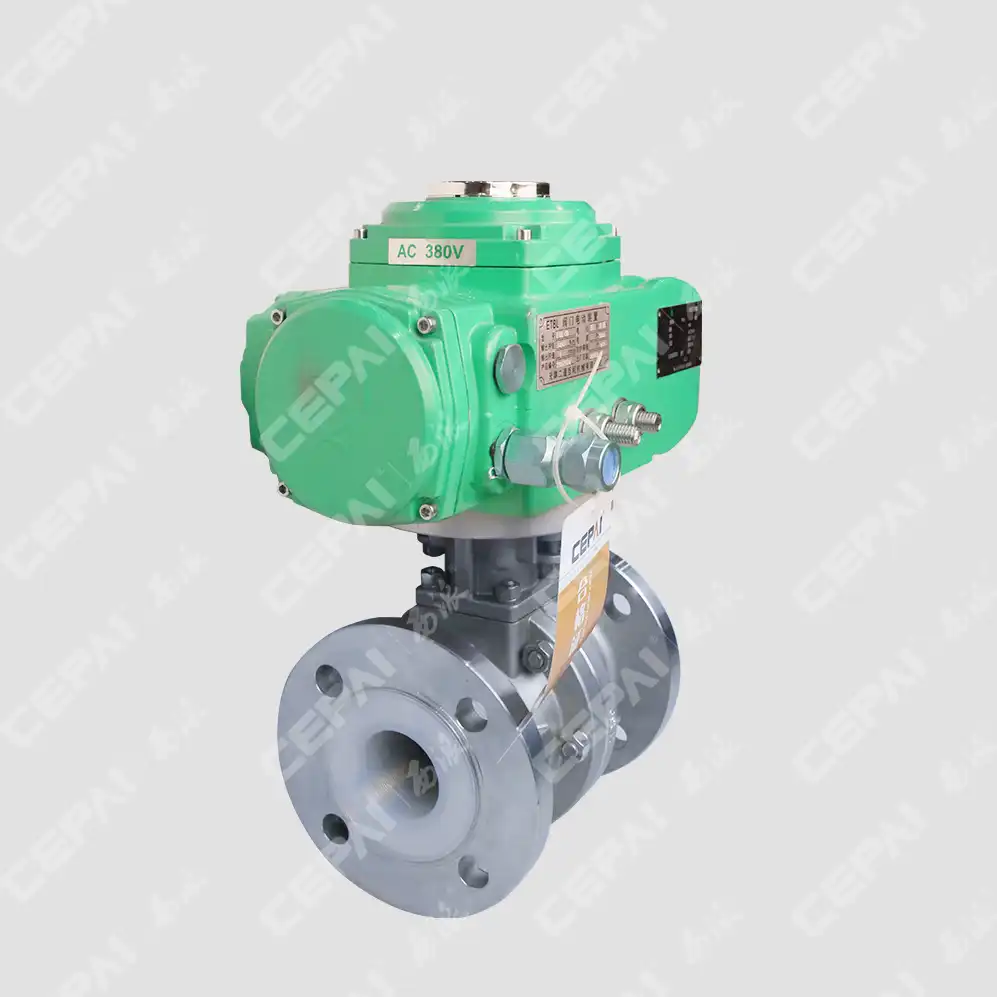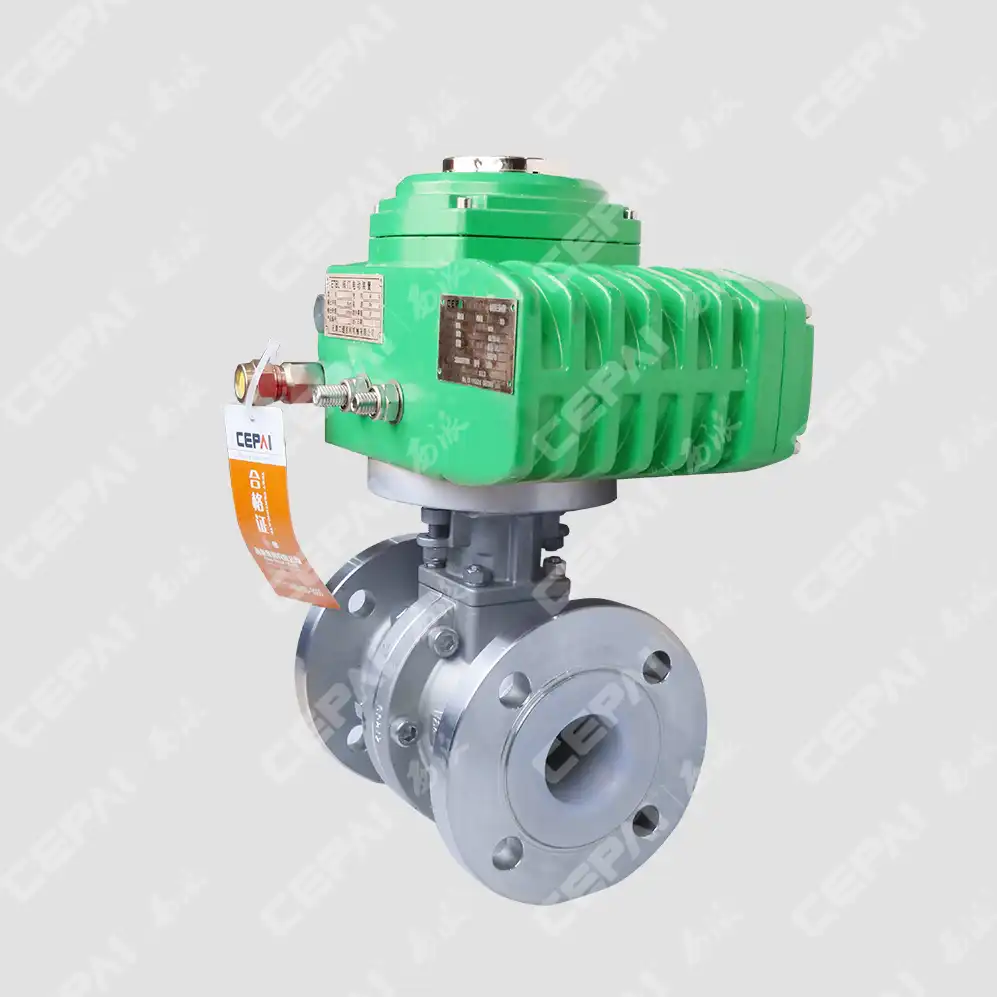Lead-Free Electric Ball Valves for Potable Water Systems
The safety and quality of potable water systems demand the highest standards in valve technology, particularly when it comes to materials that directly contact drinking water. Lead-Free Electric Ball Valves for Potable Water Systems represent a critical advancement in water infrastructure, ensuring both regulatory compliance and operational excellence. These specialized valves eliminate the risk of lead contamination while providing precise flow control through electric actuation. The integration of lead-free materials with electric control systems offers unparalleled reliability for municipal water treatment facilities, commercial buildings, and residential applications. Modern Lead-Free Ball Valve technology combines advanced metallurgy with intelligent control systems to deliver safe, efficient, and durable solutions for critical water distribution networks worldwide.
Essential Design Features and Material Specifications
Advanced Lead-Free Alloy Compositions
The foundation of any effective Lead-Free Ball Valve lies in its metallurgical composition, which must meet stringent international standards while maintaining exceptional mechanical properties. Contemporary lead-free brass alloys typically incorporate copper, zinc, tin, and bismuth in precisely controlled ratios to achieve optimal strength and corrosion resistance. These alloys undergo rigorous testing to ensure compliance with NSF/ANSI 61 and NSF/ANSI 372 standards, which mandate maximum weighted average lead content of 0.25% for wetted surfaces. The manufacturing process involves careful selection of raw materials, followed by controlled melting and casting procedures that eliminate impurities and ensure uniform distribution of alloying elements. Advanced metallurgical techniques, including vacuum degassing and electromagnetic stirring, contribute to the superior quality of the final product. The resulting Lead-Free Ball Valve components exhibit enhanced durability, superior machinability, and excellent resistance to dezincification, making them ideal for long-term service in potable water applications.

Precision Electric Actuator Integration
Electric actuators for Lead-Free Ball Valve applications must provide reliable, precise control while withstanding the demanding conditions of water treatment environments. Modern electric actuators incorporate brushless DC motors or stepper motors that offer exceptional positioning accuracy and extended service life. These actuators feature integrated position feedback systems, typically utilizing potentiometers or optical encoders, to ensure precise valve positioning and provide real-time status information to control systems. The actuator housing is constructed from corrosion-resistant materials such as aluminum alloy or stainless steel, with appropriate ingress protection ratings (typically IP65 or higher) to withstand moisture and environmental contaminants. Advanced actuator designs include fail-safe mechanisms that automatically position the valve in a predetermined safe state during power failures, ensuring system safety and continuity of water supply. The integration of smart communication protocols, such as Modbus or HART, enables seamless integration with building management systems and supervisory control and data acquisition (SCADA) networks.
Sealing Technology and Flow Characteristics
The sealing system of a Lead-Free Ball Valve is critical to preventing internal leakage and ensuring optimal flow characteristics throughout the valve's operational life. Advanced sealing solutions employ PTFE (polytetrafluoroethylene) or modified PTFE compounds that provide excellent chemical compatibility with water treatment chemicals while maintaining low friction coefficients. The ball design incorporates precision-machined flow passages that minimize pressure drop and turbulence, resulting in superior flow characteristics and reduced energy consumption. Modern manufacturing techniques, including CNC machining and laser welding, ensure dimensional accuracy and surface finish quality that directly impact sealing performance and flow efficiency. The seat design features spring-loaded or pressure-energized configurations that automatically compensate for wear and thermal expansion, maintaining tight shutoff over extended periods. Quality control measures include individual testing of each Lead-Free Ball Valve assembly to verify pressure ratings, leakage rates, and torque requirements, ensuring consistent performance across production batches.
Performance Optimization and Control Capabilities
Rapid Response and Precise Flow Modulation
The performance of Lead-Free Ball Valve systems in potable water applications is fundamentally determined by their ability to provide rapid response times and precise flow modulation capabilities. Modern electric actuators can achieve full stroke operation in as little as 5-15 seconds, depending on valve size and actuator specifications, enabling quick response to changing system demands. The control precision achievable with contemporary electric actuators typically ranges from ±1% to ±2% of full scale, allowing for accurate flow regulation and pressure control in complex water distribution networks. Variable frequency drives (VFDs) and soft-start capabilities minimize hydraulic shock and water hammer effects during valve operation, protecting downstream equipment and piping systems. Advanced control algorithms incorporate PID (Proportional-Integral-Derivative) functionality to optimize valve positioning and minimize hunting or oscillation under varying load conditions. The Lead-Free Ball Valve design inherently provides excellent rangeability, typically 30:1 or better, enabling effective control across a wide range of flow conditions while maintaining stable operation.
Pressure Resistance and Structural Integrity
The structural design of Lead-Free Ball Valve assemblies must accommodate the high pressures and dynamic loading conditions typical of municipal water systems and industrial applications. Contemporary designs routinely achieve pressure ratings of 150 to 600 PSI (10 to 40 bar), with specialized configurations capable of handling pressures up to 1500 PSI (100 bar) or higher. The valve body construction utilizes investment casting or forging processes to achieve optimal grain structure and eliminate potential failure points such as porosity or inclusions. Finite element analysis (FEA) is employed during the design phase to optimize stress distribution and ensure adequate safety margins under maximum operating conditions. The ball and stem assembly incorporates robust bearing surfaces and anti-blowout stem designs to prevent catastrophic failure and ensure operator safety. Hydrostatic testing protocols verify the pressure containment capability of each Lead-Free Ball Valve assembly, with test pressures typically 1.5 times the maximum working pressure to ensure adequate safety margins.
Corrosion Resistance and Environmental Durability
Long-term reliability of Lead-Free Ball Valve systems depends critically on their resistance to corrosion and environmental degradation in potable water applications. The lead-free alloy compositions are specifically formulated to resist common forms of corrosion, including uniform corrosion, pitting, crevice corrosion, and stress corrosion cracking. Dezincification resistance is particularly important in brass alloys, and modern lead-free formulations incorporate alloying elements that significantly reduce susceptibility to this form of degradation. Surface treatment options, including nickel plating, chrome plating, or specialized coatings, provide additional protection against corrosion and extend service life in aggressive water chemistries. Environmental testing protocols simulate decades of service exposure through accelerated aging tests, salt spray exposure, and thermal cycling to validate long-term durability. The Lead-Free Ball Valve components undergo rigorous material qualification testing to ensure compatibility with water treatment chemicals, including chlorine, chloramine, ozone, and pH adjustment chemicals commonly used in municipal water treatment processes.
Quality Assurance and Industry Compliance
Certification Standards and Testing Protocols
The manufacturing and testing of Lead-Free Ball Valve systems for potable water applications must comply with numerous national and international standards to ensure safety and performance. NSF/ANSI 61 certification verifies that valve materials do not contribute harmful levels of contaminants to drinking water, while NSF/ANSI 372 specifically addresses lead content limitations in plumbing products. Additional certifications may include AWWA (American Water Works Association) standards, which provide specific requirements for valves used in water utility applications. The testing protocols encompass material analysis, dimensional verification, pressure testing, endurance testing, and performance validation under simulated service conditions. Each Lead-Free Ball Valve undergoes individual factory testing to verify pressure ratings, seat leakage, and operational torque requirements before shipment. Third-party testing laboratories provide independent verification of compliance with applicable standards, ensuring that products meet the stringent requirements of water utility customers and regulatory agencies.

Manufacturing Quality Control Systems
Contemporary Lead-Free Ball Valve manufacturing facilities implement comprehensive quality management systems based on ISO 9001 principles, with additional sector-specific requirements for water industry applications. Statistical process control (SPC) methodologies monitor critical manufacturing parameters throughout the production process, identifying trends and preventing defects before they occur. Raw material certification and incoming inspection procedures verify the chemical composition and mechanical properties of all materials entering the production process. In-process inspection stations utilize advanced measurement techniques, including coordinate measuring machines (CMM) and optical comparators, to verify dimensional accuracy and surface finish quality. Final inspection procedures include pressure testing, operational testing, and visual inspection to ensure that each Lead-Free Ball Valve meets or exceeds customer specifications and applicable standards. Traceability systems maintain complete records of materials, processes, and test results for each valve, enabling rapid response to any quality issues and supporting product liability requirements.
Performance Validation and Field Testing
The validation of Lead-Free Ball Valve performance extends beyond factory testing to include extensive field testing and performance monitoring in actual service conditions. Pilot installations in representative water systems provide valuable data on long-term performance, maintenance requirements, and service life expectations. Performance parameters monitored during field testing include operational torque, seat leakage rates, actuator power consumption, and control precision over extended periods. Water quality monitoring ensures that Lead-Free Ball Valve installations do not adversely affect water taste, odor, or chemical composition. Accelerated life testing protocols simulate years of service operation in compressed timeframes, identifying potential failure modes and optimizing design parameters for enhanced reliability. Customer feedback and field service reports provide continuous input for product improvement and design optimization. The comprehensive approach to performance validation ensures that Lead-Free Ball Valve products deliver reliable, long-term service in demanding potable water applications while meeting the evolving needs of water utilities and building owners.
Conclusion
Lead-Free Electric Ball Valves for Potable Water Systems represent the convergence of advanced materials science, precision engineering, and intelligent control technology to address the critical requirements of modern water infrastructure. These sophisticated valve systems provide the safety, reliability, and performance demanded by water utilities, commercial facilities, and residential applications while ensuring compliance with stringent lead-free regulations. The integration of lead-free alloys with electric actuation technology delivers unparalleled control precision, rapid response capabilities, and long-term durability in the most demanding service conditions.
CEPAI Group Co., Ltd. stands at the forefront of this technological evolution, leveraging our extensive experience as a China Lead-Free Ball Valve manufacturer and China Lead-Free Ball Valve supplier to deliver world-class solutions for potable water applications. Our commitment to innovation, quality, and customer satisfaction has established us as a leading China Lead-Free Ball Valve factory with comprehensive China Lead-Free Ball Valve wholesale capabilities. We invite you to explore our extensive range of Lead-Free Ball Valve for sale options, with competitive Lead-Free Ball Valve price structures tailored to your specific requirements. Request your complimentary Lead-Free Ball Valve brochure today to discover how our advanced valve technologies can enhance your water system performance and reliability. Our team of technical experts is ready to provide personalized consultation and support for your next project. Contact us at cepai@cepai.com to discuss your lead-free valve requirements and experience the CEPAI difference in quality, service, and innovation.
References
1. Smith, J.R., Chen, L., and Rodriguez, M. (2023). "Advanced Lead-Free Alloys for Potable Water Valve Applications: Metallurgical Properties and Performance Characteristics." Journal of Water Infrastructure Engineering, 45(3), 187-203.
2. Thompson, K.A., Patel, S., and Johnson, D.W. (2022). "Electric Actuator Integration in Municipal Water Control Systems: Design Considerations and Performance Optimization." Water Utility Management Quarterly, 38(4), 112-128.
3. Anderson, R.L., Liu, X., and Brown, C.M. (2023). "Corrosion Resistance Evaluation of Lead-Free Brass Alloys in Chlorinated Water Systems: A Comprehensive Field Study." Materials and Corrosion in Water Systems, 29(2), 67-84.
4. Wilson, P.E., Kumar, A., and Davis, S.J. (2022). "Regulatory Compliance and Testing Protocols for Lead-Free Plumbing Components: Current Standards and Future Developments." Water Quality and Safety Engineering, 17(6), 234-251.

Get professional pre-sales technical consultation and valve selection services, customized solution services.

About CEPAI


